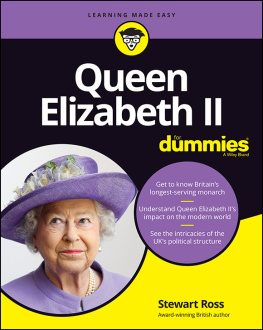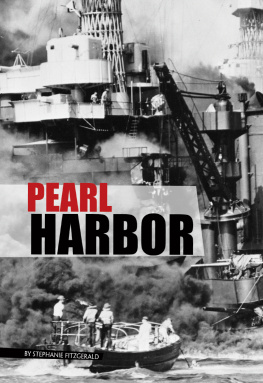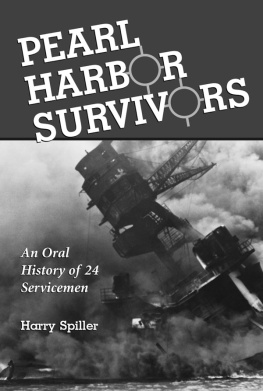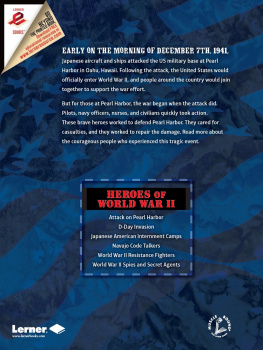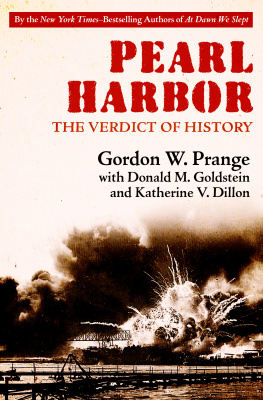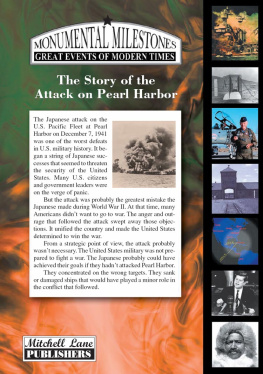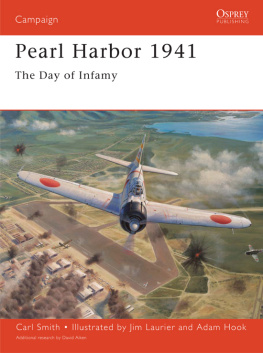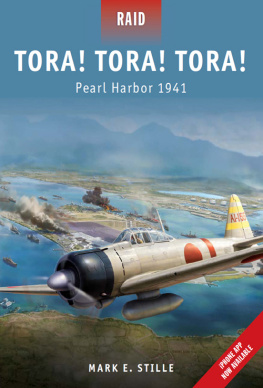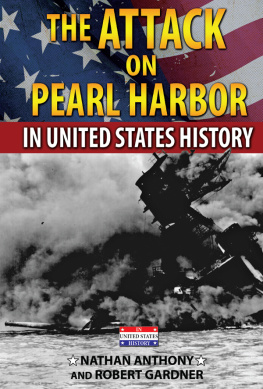Stewart Ross - Pearl Harbor
Here you can read online Stewart Ross - Pearl Harbor full text of the book (entire story) in english for free. Download pdf and epub, get meaning, cover and reviews about this ebook. year: 2012, publisher: Encyclopaedia Britannica;Britannica Digital Learning, genre: History. Description of the work, (preface) as well as reviews are available. Best literature library LitArk.com created for fans of good reading and offers a wide selection of genres:
Romance novel
Science fiction
Adventure
Detective
Science
History
Home and family
Prose
Art
Politics
Computer
Non-fiction
Religion
Business
Children
Humor
Choose a favorite category and find really read worthwhile books. Enjoy immersion in the world of imagination, feel the emotions of the characters or learn something new for yourself, make an fascinating discovery.

- Book:Pearl Harbor
- Author:
- Publisher:Encyclopaedia Britannica;Britannica Digital Learning
- Genre:
- Year:2012
- Rating:5 / 5
- Favourites:Add to favourites
- Your mark:
- 100
- 1
- 2
- 3
- 4
- 5
Pearl Harbor: summary, description and annotation
We offer to read an annotation, description, summary or preface (depends on what the author of the book "Pearl Harbor" wrote himself). If you haven't found the necessary information about the book — write in the comments, we will try to find it.
Pearl Harbor tells the story of how the American naval base at Pearl Harbor in Hawaii became the target of a surprise attack by the Japanese in December 1941.
Pearl Harbor — read online for free the complete book (whole text) full work
Below is the text of the book, divided by pages. System saving the place of the last page read, allows you to conveniently read the book "Pearl Harbor" online for free, without having to search again every time where you left off. Put a bookmark, and you can go to the page where you finished reading at any time.
Font size:
Interval:
Bookmark:

One hour and forty minutes after leaving the carriers I knew that we should be nearing our goal. Small openings in the thick cloud cover afforded occasional glimpses of the ocean, as I strained my eyes for the first sight of land. Suddenly a long white line of breaking surf appeared directly beneath my plane. It was the northern shore of Oahu, toward the west coast of the island, we could see that the sky over Pearl Harbor was clear.
Commander Mitsuo Fuchida, Imperial Japanese Navy

E-book published in 2012 by Encyclopdia Britannica, Inc., in association with Arcturus Publishing Limited, 26/27 Bickels Yard, 151-153 Bermondsey Street, London SE1 3HA. Britannica, Encyclopdia Britannica, and the Thistle logo are registered trademarks of Encyclopdia Britannica, Inc.
This edition first published in 2010 by Arcturus Publishing
Distributed by Black Rabbit Books
P.O. Box 3263
Mankato
Minnesota MN 56002
Copyright 2010 Arcturus Publishing Limited
The right of Stewart Ross and Joe Woodward to be identified as the authors of this work has been asserted by them in accordance with the Copyright, Designs and Patents Act 1988.
All rights reserved.
Series concept: Alex Woolf
Editors: Sean Connolly and Alex Woolf
Designer: Phipps Design
Picture research: Alex Woolf
Map illustrators: Stefan Chabluk and The Map Studio
Library of Congress Cataloging-in-Publication Data
Ross, Stewart.
Pearl Harbor / Stewart Ross and Joe Woodward.
p. cm. -- (A place in history)
Includes bibliographical references and index.
ISBN 978-1-61535-601-0 (e-book)
1. Pearl Harbor (Hawaii), Attack on, 1941--Juvenile literature.
2. World War, 1939-1945--Causes--Juvenile literature. 3.
Japan--Foreign relations--United States--Juvenile literature. 4.
United States--Foreign relations--Japan--Juvenile literature. I.
Woodward, Joe. II. Title.
D767.92.R68 2011
940.54'26693--dc22
2010017108
Picture credits:
Arcturus: 9 (Stefan Chabluk), 27 (The Map Studio), 29 (The Map Studio).
Corbis: cover both (Bettmann), 67 (Bettmann), 8 (Bettmann), 10 (Bettmann), 12 (Schenectady Museum; Hall of Electrical History Foundation), 14 (Bettmann), 15, 16, 18 (Bettmann), 19 (Bettmann), 20 (Bettmann), 24 (Bettmann), 26 (Bettmann), 28 (Bettmann), 30 (Bettmann), 31 (Bettmann), 32 (Bettmann), 33 (Bettmann), 34, 36 (Bettmann), 37 (Bettmann), 38 (Bettmann), 39 (Bettmann), 40 (Reuters), 41 (Bettmann), 42 (Bettmann).
Getty Images: 11 (Time & Life Pictures), 13 (Hulton Archive), 17 (Keystone/Hulton Archive), 21 (Popperfoto), 22 (Hulton Archive), 23 (Thomas D. McAvoy/Time & Life Pictures), 25 (MPI/Hulton Archive).
Shutterstock: 43 (TechWizard).
Cover pictures:
Background: The battleships USS West Virginia and USS Tennessee in flames after the Japanese surprise attack on Pearl Harbor on December 7, 1941.
Foreground: President Franklin D. Roosevelt, wearing a black armband, signs the United States declaration of war against Japan on December 8, 1941.
Every attempt has been made to clear copyright. Should there be any inadvertent omission, please apply to the copyright holder for rectification.
SL001442US Supplier 03 Date 0510
We rushed outside to see a string of airplanes in a shallow dive toward the ships. We could see red anti-aircraft tracer shells floating up toward the lead aircraft. My wife and her friends went up into the hills to hide in a cave and I caught a boat to Ford Island. On the way over I saw sunken US Navy ships on both sides burning furiously.
Memories of Dale Gano, an eyewitness
Operation Z

Dawn, December 7, 1941: Japanese carrier-borne Mitsubishi dive bombers line up on deck ready for takeoff. A few hours later they were screaming into attack at Pearl Harbor.
S hortly after dawn on December 7, 1941, Commander Mitsuo Fuchida stepped from the flight deck of the Japanese aircraft carrier Akagi and into the cockpit of his Nakajima B5N bomber. Behind him, rows of torpedo bombers and fighters stood in readiness. Alongside the Akagi steamed six other Japanese carriers, their flight decks packed with aircraft. Beyond them, the waiting pilots could see the outlines of the escort battleships and destroyers of the naval Striking Force. Far in front, midget submarines stealthily prepared to approach their target.
The Striking Force was the most powerful aircraft carrier fleet the world had ever seen. It had been assembled for one audacious mission: a surprise air assault on the unsuspecting US Pacific Fleet at its home base in Hawaii. If the mission, known as Operation Z, was successful, then the only force capable of stopping a Japanese offensive into Southeast Asia would be destroyed before war had even been declared.
At 06:00 Commander Fuchida received the order he had been waiting for. His bomber thundered along the flight deck and into the gray skies over the Pacific. A total of 353 Japanese aircraft, dive bombers, torpedo planes, and fighters followed him, their pilots gathering in two waves over the Striking Force, before setting course for the Hawaiian Islandstheir target: Pearl Harbor.
Pearl Waters
P earl Harbor is a deep, Y-shaped inlet on the southern coast of Oahu, the third largest of the Hawaiian Islands. This beautiful archipelago stretches in a 2,000-mile (3,000-kilometer) arc across the mid-Pacific. Known in the Hawaiian language as Wai Momi, meaning Pearl Waters, the famous harbor lies some 2,385 miles (3,850 kilometers) west of San Francisco, 4,100 miles (6,500 kilometers) east of Tokyo, and 4,600 miles (7,300 kilometers) north of Australia. Such is the strategic importance of this position, it is said to stand at the crossroads of the Pacific.
The British explorer Captain James Cook was the first European to land on the Hawaiian Islands (1778). He found them inhabited by Polynesians who had crossed there in huge seagoing canoes a thousand years before. Following Cooks visit, these peoples were soon outnumbered by immigrants, mainly from the United States. American business, notably whaling and sugar farming, also moved in, and in 1851 King Kamehameha III of Hawaii put his country under US protection. From this point onward, Hawaiian independence was doomed.

A British expedition, led by the explorer Captain James Cook, lands on the Hawaiian Islands, 1778. As was the European custom at the time, he gave them a Western name, the Sandwich Islands.
VOICES
Naming the islands
Besides these six [islands], which we can distinguish by their names, it appeared that the inhabitants were acquainted with some other islands both to the eastward and westward. I named the whole group the Sandwich Islands, in honor of the Earl of Sandwich.
Captain Cook, 1778. Hawaii became the commonly used name in the 19th century.
A USHawaii treaty of 1875 increased US influence, and 12 years later the king was forced to accept a government dominated by white sugar farmers. The monarchy collapsed soon afterward. In 1900 the jewels of the Pacific that Mark Twain called the loveliest fleet of islands that lies anchored in any ocean were formally annexed to the United States as overseas territories.
Next pageFont size:
Interval:
Bookmark:
Similar books «Pearl Harbor»
Look at similar books to Pearl Harbor. We have selected literature similar in name and meaning in the hope of providing readers with more options to find new, interesting, not yet read works.
Discussion, reviews of the book Pearl Harbor and just readers' own opinions. Leave your comments, write what you think about the work, its meaning or the main characters. Specify what exactly you liked and what you didn't like, and why you think so.


